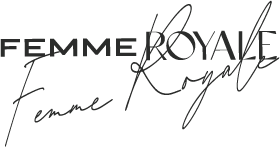an example of a high-fiber day of eating while maintaining a high-protein diet
below you’ll find an example of what a day of high-fiber eating looks like while maintaining a high-protein diet. although there are many ways to achieve this, this example is for our visual learners to help those better understand what that may look like.
breakfast:
oatmeal bowl:
1 cup cooked oats
1/2 sliced banana
1 tablespoon almond butter
1 tablespoon chia seeds
1 cup unsweetened almond milk
protein: ~13.5g
fiber: ~13g
morning snack:
cottage cheese and berries:
1 cup low-fat cottage cheese
1/2 cup mixed berries
protein: ~29g
fiber: ~4g
smoothie:
1 scoop protein powder
1 cup spinach
1/2 cup frozen berries
1 tablespoon flaxseeds
1 cup water or almond milk
protein: ~25g
fiber: ~9g
lunch:
chickpea and vegetable Salad:
1 cup chickpeas (canned, drained, and rinsed)
Mixed vegetables (cucumber, cherry tomatoes, bell peppers)
2 cups mixed greens (spinach, kale)
1/4 cup feta cheese
Olive oil and balsamic vinegar for dressing
Grilled chicken breast (4 oz)
protein: ~51g
fiber: ~17.5g
afternoon snack:
apple and almond butter:
1 medium apple, sliced
2 tablespoons almond butter
protein: ~7g
fiber: ~7g
dinner:
salmon and quinoa stir-fry:
4 oz grilled salmon
1 cup cooked quinoa
stir-fried vegetables (broccoli, bell peppers, snap peas) in olive oil
1 tablespoon soy sauce or tamari
protein: ~38g
fiber: ~10g
evening snack:
greek yogurt parfait:
1 cup plain greek yogurt
1/2 cup granola (look for a high-fiber option)
1/2 cup diced mango or berries
1 tablespoon ground flaxseed
protein: ~25g
fiber: ~9g
grand totals (approximate):
protein: ~188.5g
fiber: ~70.5g
This sample day provides a mix of protein sources (chicken, salmon, Greek yogurt, cottage cheese, quinoa, chickpeas) and incorporates high-fiber foods like fruits, vegetables, nuts, seeds, and whole grains. Adjust portion sizes and food choices based on your preferences and nutritional needs. Additionally, make sure to drink plenty of water throughout the day.

